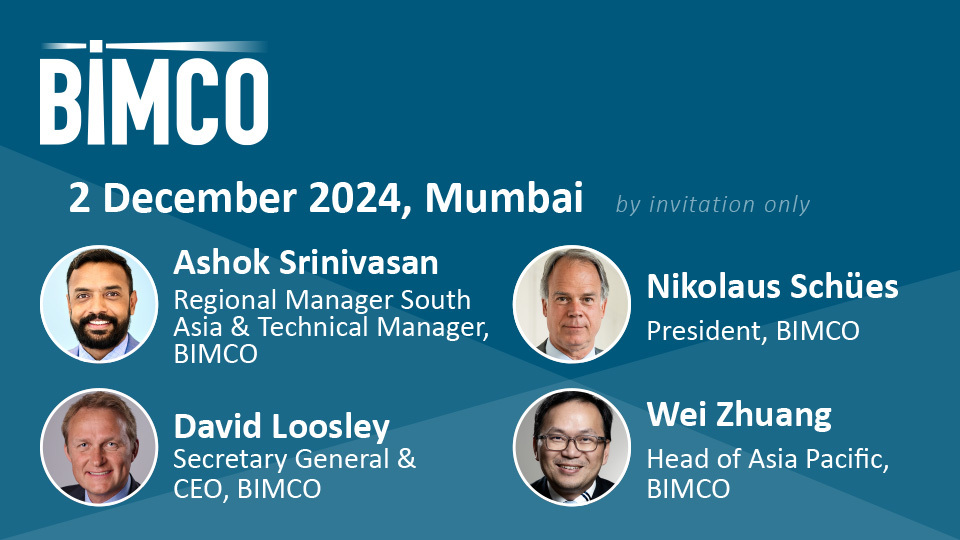New lifeboat ventilation requirements of survival crafts enhances the safety and survivability of the seafarer
Overview
BIMCO attended the 5th session of the IMO’s Sub-Committee on Ship Systems and Equipment (SSE 5), which was held in London from 12 to 16 March 2018.
This is a short summary of the main issues from the meeting:
Saving seafarers’ life
A large part of the agenda at SSE 5 focused on the development of new requirements for the ventilation on survival craft to reduce the CO2 levels onboard a totally closed lifeboat. At the meeting, SSE 5 considered the influence of different parameters on the microclimate within and enclosed lifeboat and agreed that the CO2 concentration in the atmosphere of the lifeboat will be measured to find the threshold for ventilation requirements. In order not to exceed a given CO2 threshold, depending on the number, size and activity of persons in the survival craft, it was decided on how air exchange should be arranged by manufacturers.
SSE 5 agreed on a CO2 contribution threshold level of 5,000 ppm and a ventilation rate of at least 5m3/hrs per person in the lifeboat.
The draft amendments to the Life-Saving Appliances (LSA) Code will be send to MSC 100, in December 2018 for approval.
Requirements for onboard lifting appliances and winches
Based on the work of a correspondence group, SSE 5 further developed draft goals and functional requirements suitable for onboard lifting appliances and winches. A fair amount of time was used to discuss new SOLAS requirements for lifting appliances.
Lifting appliances, in this regard, means any load-handling appliance installed on board a ship used for suspending, raising or lowering loads or moving loads from one position to another while they are suspended or supported. This covers quite a lot of installations on board. Loose gear and anchor handling winches (for deploying, recovering and repositioning anchors and mooring lines in subsea operations) will be covered by the new regulation. The regulation is expected to be applicable to both new and existing ships. The regulation will not be applicable to eg cranes, with a low safe working load still to be determined.
Goals and functional requirements were further developed. They will cover the design, fabrication and construction for new installations; as well as procedures for routine inspection, maintenance and operation of onboard lifting appliances and winches.
More work needs to be done and BIMCO will participate in the correspondence group that will deliver a report to the next session of the sub-committee.
Pass the watertight door safely
SSE 5 considered a proposal from China to provide visible traffic-light warning signs on both sides of the watertight door (WTD). Using signs should warn about the crushing effect of the door if the crew onboard took the risk of passing the door whilst closing. During the meeting, it was noted, that warning signs may unintentionally increase the frequency of crushing incidents and unsafe behaviors, and when a WTD is moving it is not safe to pass through. Despite, that the proposal presents a solution that is workable and relatively easy to implement for a critical problem, SSE 5 concluded that passing through the door during closing should never be allowed, and thus there was no need for the signs at all.
Cold ironing
Following a proposal at MSC 98, IMO agreed to develop safety provisions for ships using shore power supply (OPS) during berthing. Although there was insufficient time to start the considerations on this matter, SSE 5 decided to establish a correspondence group to deal with the development of guidelines until the next meeting in spring 2019.
It was agreed, that due considerations should be given to avoid duplication or conflict between the new guidelines and other recognized international standards. Further, that references to recent versions of these standards should be included in the IMO guidelines.
Feedback or a question about this information?
VPS Bunker Alerts
Veritas Petroleum Services (VPS) publish regular Bunker Alerts based entirely on fuel samples and have kindly permitted BIMCO’s Members to access this information.
The Bunker Alerts are not intended to be an evaluation of overall bunker quality in the port or area concerned, but usually highlight a specific parameter within the fuel which has raised a quality issue.
Latest ice reports for members
Latest piracy reports
Latest industry releasable threats
ELSEWHERE ON BIMCO
Contracts & Clauses
All of BIMCO's most widely used contracts and clauses as well as advice on managing charters and business partners.
Learn about your cargo
For general guidance and information on cargo-related queries.
BIMCO Publications
Want to buy or download a BIMCO publication? Use the link to get access to the ballast water management guide, the ship master’s security manual and many other publications.
About a new business partner
We can help members check new business partners. We also help to recover millions of USD (undisputed) funds every year.





